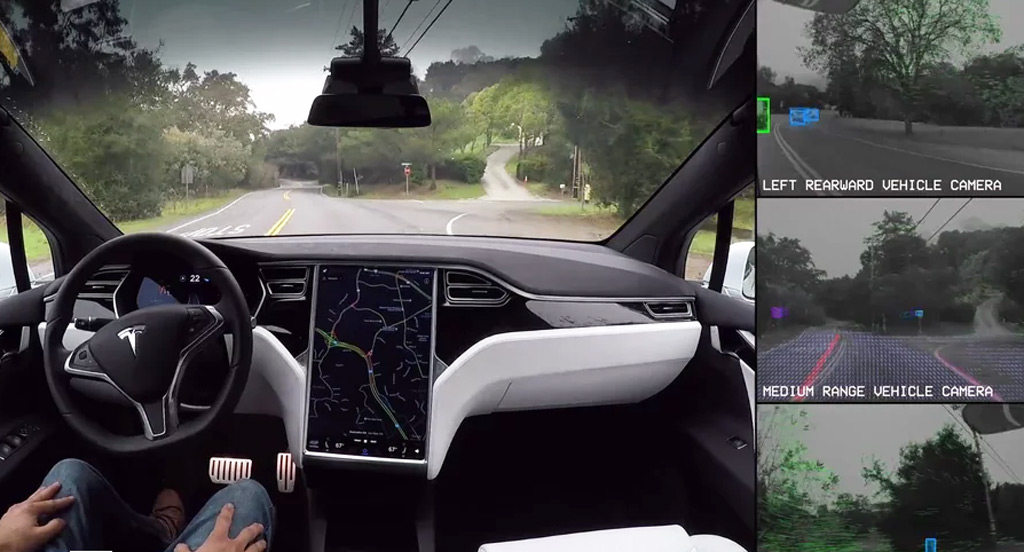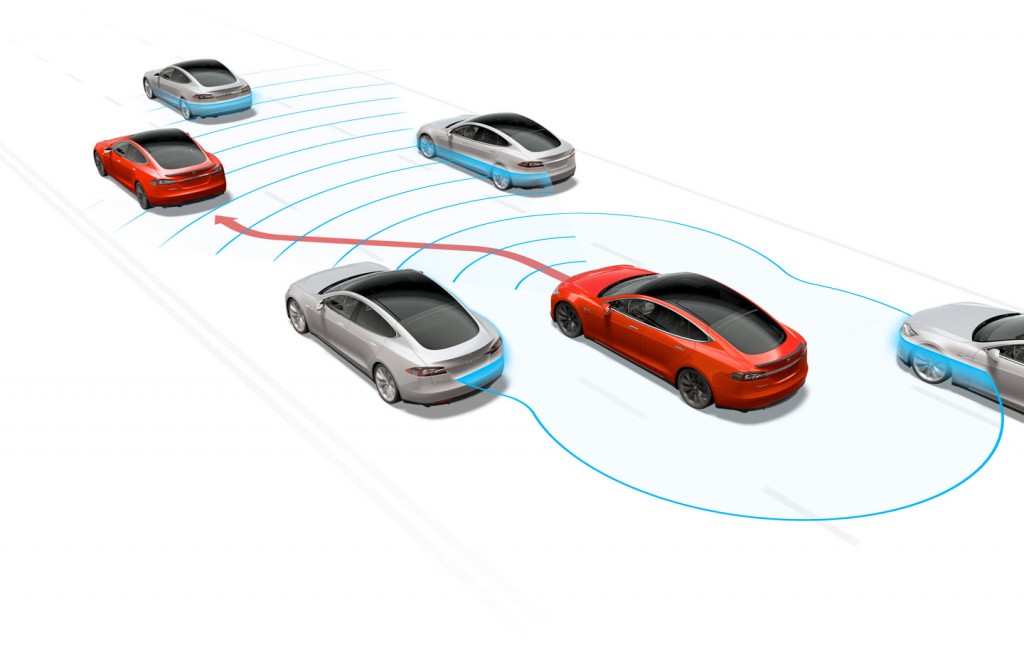Early last year, with promises of self-driving cars in owners' hands well before any competitor, development of the Tesla Autopilot system for the maker's electric cars was proceeding nicely.
Then, in May 2016, a dedicated Tesla owner was killed in a Florida crash when his Tesla Model S, operating on Autopilot, hit a tractor-trailer rig broadside and passed under it, shearing off the roof.
The subsequent 16 months have been considerably rockier for Tesla and the collection of active-safety and driver-assistance aids that make up Autopilot.
DON'T MISS: Tesla upgrades self-driving sensors, hardware; full autonomy test next year? (Oct 2016)
Now, CEO Elon Musk appears to have confirmed reports in September that Tesla is designing its own artificial-intelligence processor for self-driving car systems.
That CNBC report suggested Tesla may be working with Silicon Valley chipmaker Advanced Micro Devices, and was already testing samples of the first fabricated chips, built on top of intellectual property owned by AMD.
A new CNBC report said Musk told attendees at a private party last Thursday night that the company was developing "specialized AI hardware that we think will be the best in the world."
EDITOR'S NOTE: This story was originally published on September 21, 2017. We have updated it to reflect new reporting in December 2017 that CEO Elon Musk told attendees at an industry event Tesla is, in fact, developing its own AI chip.

Tesla Autopilot
Such custom hardware, Musk said, would have advantages in lower power use and reduced costs.
Any AI chip implemented in future Tesla electric cars would replace current processors built by Nvidia, which has supplied processing units to Tesla since the launch of the Model S in mid-2012.
Using a chip dedicated to the specific tasks of interpreting sensor information specific to semi-autonomous vehicles could help Tesla meet CEO Elon Musk's pledge that self-driving capabilities would be available in some Tesla vehicles by 2019.
READ THIS: Tesla Hardware 2: so what functions work in Autopilot and what don't? (Jun 2016)
The chip project is being overseen by Autopilot head Jim Keller, an eight-year Apple veteran who had designed several chips for various iPhones. Tesla hired Keller in 2015, and he spoke at the private event last Thursday.
In September, Sanjay Jha, CEO of chip foundry GlobalFoundries, which uses AMD wafers, said Tesla was one example of a customer working with fabricators like his company—but did not specifically say Tesla was a GlobalFoundries customer.
No schedules for launch of any such chip were given in the report, and GlobalFoundries later said, "Tesla has not committed to working with us on any autonomous driving technology or product."

Tesla Autopilot sensor system
Since that May 2016 crash,Tesla's Autopilot software has had a somewhat rockier development path. The company said in October 2016 that all new cars in production were being fitted with a new and different suite of sensors for the Autopilot system and other functions, dubbed Hardware 2.0.
While it initially said that Autopilot functions for the new hardware would equal or surpass those from the former Hardware 1.0 within a few months, that process has taken almost a year.
Owners who took delivery of Teslas with the new hardware suite waited months for upgrades to Autopilot that would restore functions, including adaptive cruise control and active lane control, that had been part of all cars fitted with the earlier Autopilot implementation.
CHECK OUT: Why did Tesla take capabilities out of latest Model S + Model X? (Nov 2016)
The abrupt hardware switch was apparently due to Tesla's supplier Mobileye ending its agreement to provide not only the first set of sensors but also some of the software that enabled many of Autopilot's features.
Mobileye said soon after the fatal Florida crash that its products were being used in ways it had not agreed to.
It appears that Tesla did not immediately have its own software available when the tech company withdrew its products, and has had to develop it on a rapid timetable.

Nvidia BB8 self-driving car prototype
Tesla has already added sensors to the new hardware suite, variously calling the new setup "Hardware 2.5" and then "Hardware 2.1."
The company said at the time of the crash that it occurred because "neither Autopilot nor the driver noticed the white side of the ... trailer against a brightly lit sky, so the brake was not applied."
But a July NTSB report on the fatal crash concluded Autopilot lacked "system safeguards" to ensure it was used only under appropriate circumstances, and "gave far too much leeway to the driver to divert his attention.”
_______________________________________













